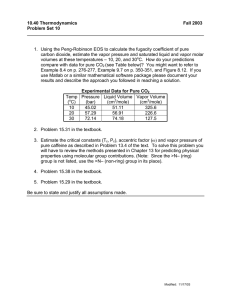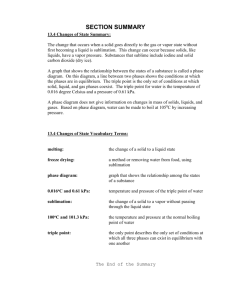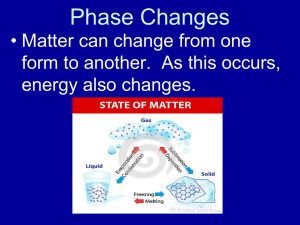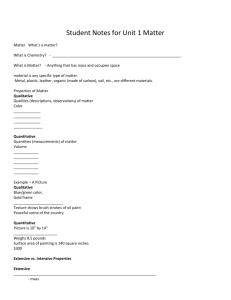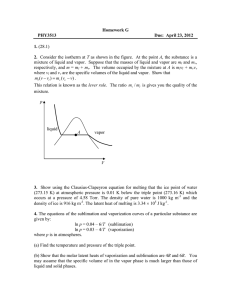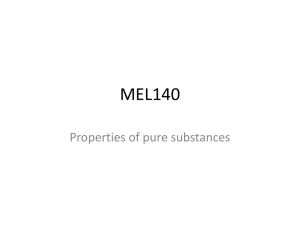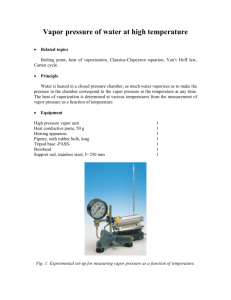Pure substances: vapor–liquid critical point
advertisement
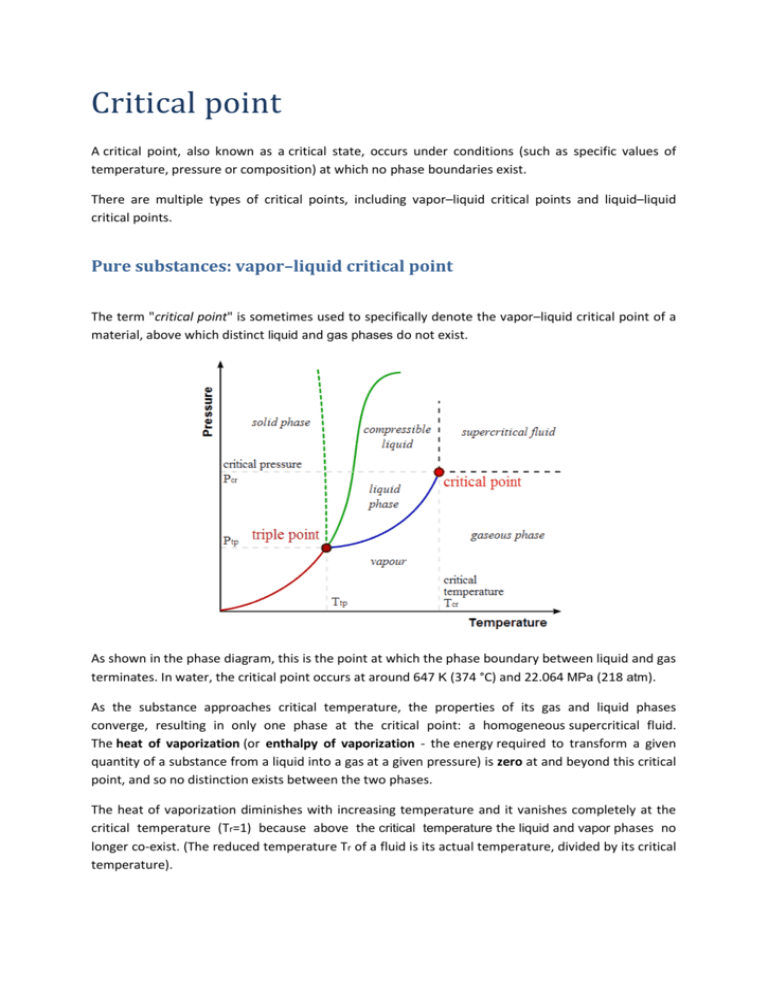
Critical point A critical point, also known as a critical state, occurs under conditions (such as specific values of temperature, pressure or composition) at which no phase boundaries exist. There are multiple types of critical points, including vapor–liquid critical points and liquid–liquid critical points. Pure substances: vapor–liquid critical point The term "critical point" is sometimes used to specifically denote the vapor–liquid critical point of a material, above which distinct liquid and gas phases do not exist. As shown in the phase diagram, this is the point at which the phase boundary between liquid and gas terminates. In water, the critical point occurs at around 647 K (374 °C) and 22.064 MPa (218 atm). As the substance approaches critical temperature, the properties of its gas and liquid phases converge, resulting in only one phase at the critical point: a homogeneous supercritical fluid. The heat of vaporization (or enthalpy of vaporization - the energy required to transform a given quantity of a substance from a liquid into a gas at a given pressure) is zero at and beyond this critical point, and so no distinction exists between the two phases. The heat of vaporization diminishes with increasing temperature and it vanishes completely at the critical temperature (Tr=1) because above the critical temperature the liquid and vapor phases no longer co-exist. (The reduced temperature Tr of a fluid is its actual temperature, divided by its critical temperature). On the PT diagram, the point at which critical temperature and critical pressure meet is called the critical point of the substance. Above the critical temperature, a liquid cannot be formed by an increase in pressure, even though a solid may be formed under sufficient pressure. The critical pressure is the vapor pressure at the critical temperature. The critical molar volume is the volume of one mole of material at the critical temperature and pressure. Critical properties vary from material to material, and for many pure substances are readily available in the literature. Nonetheless, obtaining critical properties for mixtures is more challenging. Mathematical definition For pure substances, there is an inflection point in the critical isotherm (constant temperature line) on a pV diagram. This means that at the critical point: That is, the first and second partial derivatives of the pressure p with respect to the volume V are both zero, with the partial derivatives evaluated at constant temperature T. Sometimes a set of reduced properties is defined in terms of the critical properties, i.e.: where Tr is the reduced temperature, pr is the reduced pressure, Vr is the reduced volume, and R is the universal gas constant. Mixtures: liquid–liquid critical point The liquid–liquid critical point of a solution, which occurs at the critical solution temperature, occurs at the limit of the two-phase region of the phase diagram. In other words, it is the point at which an infinitesimal change in some thermodynamic variable (such as temperature or pressure) will lead to separation of the mixture into two distinct liquid phases, as shown in the polymer–solvent phase diagram to the right. Two types of liquid–liquid critical points are the upper critical solution temperature (UCST), which is the hottest point at which cooling will induce phase separation, and the lower critical solution temperature, which is the coldest point at which heating will induce phase separation.
